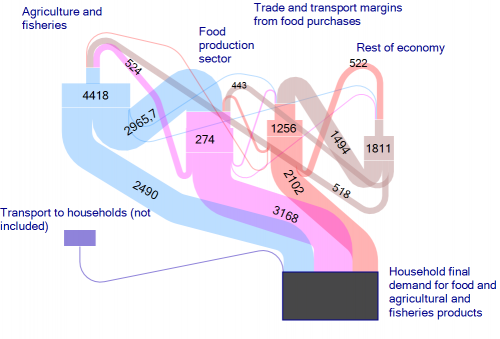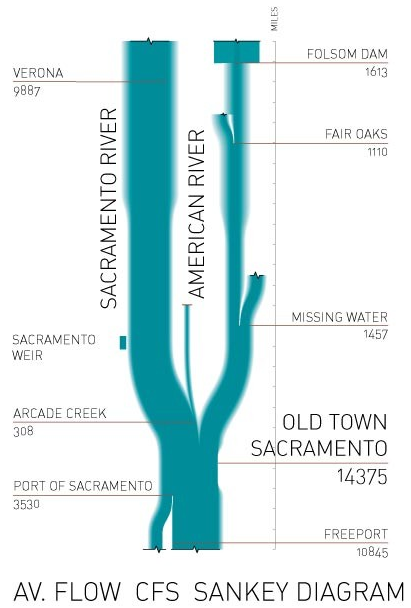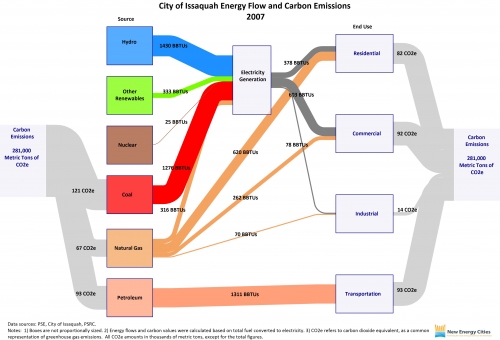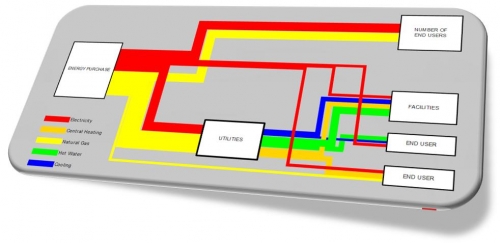From a book ‘Environmental and climate analysis for the Norwegian agriculture and food sector and assessment of actions’ by John Hille, Christian Solli, Karen Refsgaard, Helge Berglann, Knut Krokann published on ResearchGate.
Download the full book on ResearchGate.
Not sure about the unit of flows.The unit of flows is kT CO2-eq./year (see comment by Christian Solli). The Sankey diagram shows embodied carbon in food and agricultural products and the overall carbon footprint caused by the demand of food in Norwegian households, and consequently along the supply chains in agriculture/fisheries sector. [Updated by phineas, May 06]
This is very similar to Jason Pearson’s Economy Maps for visualizing environmental impacts.



